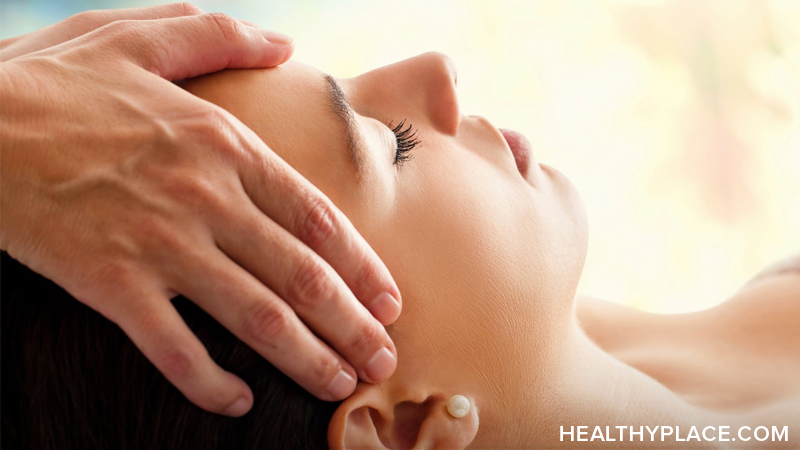Interview with Michael Lindfield on the Meaning of Change, Findhorn Spiritual Community, and Transformation
Michael Lindfield is a senior consultant with a major aerospace company where he works with innovative approaches to large-scale change of business and "people" systems. He is author of "The Dance of Change," in addition to numerous articles on individual and organizational development, and has presented at business, education and psychology conferences around the world.
Michael was a 14-year resident of the Findhorn Foundation - a spiritual community in the northeast of Scotland dedicated to exploring new and viable ways of living together. During his time at Findhorn, he worked as a gardener, Director of Education and member of the Leadership Group. He finds renewal and enjoyment in long-distance running and the piano works of Chopin, Schubert, Mendelssohn and Haydn."
Tammie: You've been very busy I understand.
Michael Lindfield: Yes, but I'm not complaining.
Tammie: Oh, good.
Michael Lindfield: Ha (Laughs)
Tammie: Great. Busy can be a very good thing. So Michael, what inspired you to write the Dance of Change?
Michael Lindfield: It was a number of things. When I was at Findhorn, I developed a passion for education. Originally, I came to Findhorn as a gardener. After working in the garden for about a year, I discovered there was another part of myself wanting to be born - more of an "educational" aspect. These two streams of gardening and education came together to create powerful images about the world around me and inside me. I began to receive insights about how things hung together- the interdependency of Life. I had also studied many of the theosophical writings, the writings of Alice A. Bailey, and some of Rudolph Steiner's philosophy.
All of these things were sort of mulling around in my being. They were coming together and coalescing into my own world picture. During those early years at Findhorn, I developed a number of workshops that attempted to put the Ancient Wisdom into a context that was accessible and relevant for today. These courses were offered internally for the members and also as part of the guest program. I used a fairly simple approach.
continue story below
What I started to do was actually draw pictures. I would draw little cartoon pictures of daily situations in the life of an aspiring soul, such as confronting and embracing one's own shadow. Or what it means to be a world server. Or what it means to be in relationship with the living earth. Or what personal disarmament means - creating inner peace as a prelude to outer peace.
I thought in images and scenarios and would come up with these little cartoons. I put together about 300 of these drawings with colored pens on acetate sheets, or view-foils. Then I realized that each of these images probably had at least 1000 words of story behind them. Over the course of conducting the workshops, I received a number of requests from people asking whether the cartoons were available. Have you published anything and do you intend to? I said "NO". I said "NO" for a number of years. And then finally, several years later, I got a sense of right timing about responding to those requests.
And that is one thing that I learned in the garden, that everything has a season, has a timing built into it. I could feel that things were coming to a head, it was like something ripening on the vine. I had a sense that it was time to write a book. Time to put my thoughts down on paper. And so, that's what I did. It took me four months of early morning sessions in my garden shed with a typewriter to complete the manuscript. The book was published just as I was about to leave Findhorn and make the move out here to the United States. And so after all those years of not responding, the timing now seemed to work all the way around.
And it was my way of bringing together everything that was going on inside of me. It was really for two reasons. One, was to finally put everything down on paper, so it would be made visible and I could articulate my world-view. The other reason was so that I could actually bring closure to this phase of my life, leave it behind and move on.
Tammie: To put it in perspective.
Michael Lindfield: Yes, and I know it seems kind of selfish to say that the book was a way to deposit my philosophical droppings - the remains of my thought process - so I could move onto something else. It wasn't that I discarded or disowned anything - it was just that I wanted to be free to explore what was next.
Tammie: Absolutely.
Michael Lindfield: One ritual of completion at Findhon was to actually write the book. For me it was a rite of passage, literally a "write" of passage. It felt "right to write," if you will pardon the pun! So that's what it took to put the book together and get it published. That's how it came about. I'm not sure what else I can say about it.
Tammie: Michael, you mentioned that you believe there is a time for everything and I'm curious about how you knew it was time to leave Findhorn?
Michael Lindfield: Well, the same reason I knew it was time to come to Findhorn. In 1971 and 1972, I was working on a farm in Sweden and I was having some very deep experiences in nature. And these experiences were such that it was difficult for me to share them with my friends and colleagues. The farming community was more of a back to nature green wave expression, more socially and politically oriented than religious or spiritual.
When I tried to share some of these deep inner experiences I was having with the natural world, it was sort of frowned upon as not being appropriate. And so I took a month off during the summer and traveled down to Denmark. I went to stay at a summer camp, arranged by a spiritual group founded upon the teachings of a Dane called Martinus, who'd written a lot of material about "spiritual science" as it was called.
There was somebody attending the camp at the same time who had recently come from Scotland. This person had visited a spiritual community called Findhorn and had some photographs, books and a slide show. He showed the slide show in the evening and talked about the experiment at Findhorn around cooperation with nature - how humans were consciously working with the angels and the nature spirits. And I went, "Oh my goodness, this is what I've been experiencing. This is it. I have to go there. This is my next move".
I had also been reading in Alice Bailey's "Letters on Occult Meditation" about certain preparatory and advanced schools where people will be brought together to be trained in "world service". And it was indicated that the preparatory school in Britain would either be in Wales or Scotland. I wasn't sure if Findhorn was really the place mentioned, but it had all the hallmarks.
In the book, it was suggested that the preparatory school would be surrounded by water on three sides and a few miles from the nearest town. That's exactly where Findhorn was located - on a peninsular with the purifying elements of wind and water.
So with this information and the impact of the slide-show, I resolved that I would return to the farm and finish the harvest, go to Stockholm to earn some money and then leave for Scotland. And that's what happened. I arrived at Findhorn on Valentine's Day of 1973. It was a conscious choice because I thought it was an appropriate gift of love to myself in starting a new phase. And when I walked through the doors late that evening and when I sat in the sanctuary and met the community the next morning, I felt that I had come home. It was an amazing feeling.
Tammie: I bet.
Michael Lindfield: All of me felt accepted by the community. People came from varying backgrounds. Some of them I would probably not have said hi to, or believed that we had anything in common, if I had accidentally bumped into them on the street. But what we had in common was a deep inner link - we were there for the same reason. It felt absolutely right to be there. I thought at that time that I'd be at Findhorn maybe a year or two at the most. I ended up staying nearly fourteen years.
continue story below
Tammie: Wow! I had no idea you'd been there so long!
Michael Lindfield: Yes. And I noticed that there were different cycles within cycles. Every now and again, I got the sense that it was time to move on, but invariably something would happen whereby the community seemed to expand its possibilities and begin exploring further aspects of itself. The need to move on that I was sensing was, in fact, something that happened in place - I didn't actually have to move somewhere else.
Tammie: Right.
Michael Lindfield: So the "in-place" move was a chance to explore more of myself and more of what Findhorn held as a promise. For fourteen years Findhorn's rhythms and my rhythms were in sync. It was like our biorhythms were pulsing together.
Tammie: Hmm.
Michael Lindfield: So back to your question about how I knew it was time to leave. In January of 1986, I came to the U.S. to give lectures and conduct workshops. I was down at the University of Wisconsin in Milwaukee. I had a sense that it was probably time to leave Findhorn in the not-too-distant future. Nothing clearly defined - I just had this sense. I even received a job offer in San Francisco on my way up to Seattle. Something was definitely stirring. When I got back to the community, I remember driving from the airport. As I approached the community and drove through the main gate, it felt as though I had to duck my head - like the ceiling level was lower. It was nothing to do with Findhorn being less evolved or less powerful, it was simply that Findhorn wasn't the right fit anymore somehow.
Tammie: I understand.
Michael Lindfield: I talked it over with my wife Binka, and we both decided that it was time to move. As an American citizen, she had been living in Scotland for 12 years and wanted to get back home. Our children were ten and eight years old and the prospect of them growing up with two cultural backgrounds was appealing. It definitely was the time to move. There was such a "rightness" about it.
We decided to move that summer and so in May we packed up our belongings into boxes and wrote, 'Lindfield' and the word 'Seattle' on them and put them on a container ship. We didn't have any other address. We told the shipping company that we would give them a proper address in a couple of months. We didn't know exactly where we would be. Then we bought four one-way tickets to the States for the beginning of July.
Tammie: Wow!
Michael Lindfield: Two days before we were supposed to fly out, I got a call from a friend of mine in Seattle who said there was a position opening up at a local University for a Director of Community Education and that I should apply. She mentioned that the deadline was in two-days time and that I should hurry up and send in my application. I thought, "My goodness, things seem to be moving at a fast pace." So, I put together some papers and FedExed them over to Antioch University in Seattle and then got on the plane.
We landed in Boston because my wife's parents are from New England. I called Antioch University and was told that my name was on the short list of candidates for the position and would I come over for an interview. So I flew out and I went through a number of days of interviewing and waiting. In the end, I was offered this position. And so within a few days of arriving in the States, I had landed a job. I asked when they wanted me to start and they said, "next week please". So I flew back to Boston, went up to New Hampshire to get myself together. My in-laws were very gracious and gave me an old car they were about to trade in. So, I packed a few belongings and drove across the country to start work. Now, it so happened that friends from Findhorn who were living in Issaquah - a 30-minute drive east of Seattle - had just decided to take a year off and travel around the world with their family and were looking for someone to house sit.
Tammie:That's amazing Michael.
Michael Lindfield: They needed someone to look after their cat, car and house. And I said, "We'll do it, thank you very much. Wonderful."
Tammie: Right.
Michael Lindfield: And so there I was with a job and a house. I was able to give the shipping company a real address. Two days before my wife and children were scheduled to fly out west, I got a call from the shipping company saying that my belongings had arrived in Vancouver, Canada and that they would be trucking them down. So the following day I helped unload the boxes. I managed to get everything unpacked and put away so when the children arrived they had all their familiar bedding, all their toys - everything. It was perfect timing.
Tammie: How wonderful.
Michael Lindfield: And I just said, "Thank you, thank you." For me, that whole experience was a sign of being in the right rhythm. There are other times when it's like pulling teeth and nothing seems to work. Sometimes, you just have to let go, and know that it's simply not the right timing. Other times, one actually has to push on through because the resistance may be a barrier of one's own making.
Tammie: Yes.
Michael Lindfield: That's where the discrimination lies. When things don't seem to be working out, it is useful to ask if these signs are really coming from the Cosmos telling us the stars aren't right so don't do it. Or is it more a question of, "No, I need to push on through because this situation is of my own making and I am the solution." So for me timing is very important. The whole of life is built on rhythm and timing. It's the in-breath and the out-breath - the sense of knowing when to breath in, when to breath out, when to move, when to be quiet.
Tammie: Right.
Michael Lindfield: Yeah.
Tammie: I'm struck as you share your story by how much synchronicity there seems to be flowing throughout your life.
Michael Lindfield: I always get one-way tickets to places.
Tammie: Now that's faith!
continue story below
Michael Lindfield: I am one of these people who grew up in Britain and didn't complete high school. I left school in 10th grade to try and figure out what I wanted to do. I looked at my situation in Britain and didn't get a sense of anything opening up. I kept getting this strong impulse that I should go to Scandinavia. So I am 16 years old at the time, I sell my record collection, my record player, a bike, and buy a one-way ticket to Gothenburg on a ship leaving from London.
Tammie: That took courage!
Michael Lindfield: I packed a suitcase, and with $50.00 in my pocket, headed off to Sweden and the unknown. Since early childhood, I've always had a sense that something is moving me. It used to really scare me and I would ask, "Why am I doing this, why am I going?" But there was something inside that said, "Trust all of this. It is part of your education - part of finding out who you are and where you need to be in life. There is really no way that you can logically sit down and figure this out - follow your inside."
Acting this way is not logical if you compare it to the way that you and I have been trained to think rationally about things. This is a different way of operating - it is an inner rhythm, an impulse that compels us. And sometimes, one picks up the signals very clearly, but other times, they are more distorted and we find ourselves bumping into things because we have the wrong coordinates. It sometimes turns out that it is not the right place nor the right time. But basically that's how I have attempted to live my life, right from the get-go.
As far back as I can remember, there has always been this inner guiding star that says, "Follow me." It was only later in my life when I reached my early 20's, that I began to realize that this wasn't just some sort of fantasy. This was reality, or more correctly, this is reality. This is how celestial navigation works - we each carry our own guiding star. And we can navigate to that inner star.
And it's all a question of practice. We have to practice the art of inner listening to acquire the confidence and capability needed on the journey through life. It means daring to do it. It means going through all the pains involved with learning to live a soul-directed life. I am so grateful for this journey and the way I feel supported by life. Life has also given me a lot of hard knocks but those have been of my own request really.
I invoked the lessons - even though I haven't always consciously called for them. They have come from the deep part of me that says, "I want to be whole, I want to move on, I want to find my home." In response to this cry for wholeness, I am presented with all those aspects of myself that have been banished to the shadows of my being. To be whole, and to truly come home, means to embrace these shadows and bring them into the light of my Soul. I believe this is the eternal quest that we all find ourselves on - the homecoming, the search for home. So, that's how I see it.
Because of the particular philosophical framework I live within, one that acknowledges the creative rhythms and cycles of Spirit, I embrace the concept of reincarnation. So the process of living many lives to reach maturity as a soul, and find my way home, is such a natural thing.
I see the perennial shrubs in my garden going through it. They do things in the winter that look as though they have died back, but up they come again in the spring. It takes many seasons to mature and to really bring something to fruition. So how arrogant on the part of us humans to think that we are so special that we can do it in one lifetime or that we are so different from the rest of nature. For me it's not even an argument. This is the divine mechanism that I, as a soul, use to fully express in time and space.
In order to grow, I go through many seasons and these seasons are called lifetimes. It takes a certain pressure off to know that this is one step in the journey, but it also adds another pressure to make the most of this lifetime, as it does have an effect on the overall journey. Belief in reincarnation means that I don't have to pack it all into a few years because after death there is oblivion or some static state called heaven or hell. That must be a very frightening worldview to have. I could see how that could cause a lot of despair. Much of this understanding and knowledge I received from nature. I can talk more about that when we talk about some of the experiences that have helped shape my life. But basically that's how I move and choose to move through life.
Tammie: It sounds like this perspective has worked very well for you.
Michael Lindfield: It works well as long as one is clear and listens deeply within. When I'm not clear and not listening deeply within, it doesn't work as well. If it's not working, I say to myself, "You're not listening". So I straighten myself out and do whatever it takes to be receptive to those subtle signals from inside.
Tammie: When you mentioned putting Seattle on your luggage and sending it off, one of the things that strikes me Michael, is that about a year ago, I started to notice that many of the books I was reading and appreciating were written by authors living in Seattle. Or I would hear about, for instance, simplicity circles and Cecil Andrews, and find out that she was from Seattle. Just over-and-over again, it appeared to me that a great deal was going on in Seattle. I'm wondering if you find that to be true, and if it is, how do you explain what's going on there?
Michael Lindfield: Well, I told you I came in early '86, I traveled around the states. I went to Milwaukee, then to California, then up here to Washington State. I was offered the job in San Francisco, it was a nice offer and I thought it would be fun. Then I thought, "no let's just put that on the back burner."
I got on the plane to Seattle. When I got off, looked around, and sniffed the air, it felt so refreshing. It felt like, "Yeah this is home" - but not just on the physical level. Physically, it reminded me of Scotland and Scandinavia rolled into one. So I felt at home on that level. But on an inner level, on a psychic level - on a deeper level, it felt as though the sky was clear with very high ceilings: it was uncluttered.
When I was down in L.A. and San Francisco, it felt busy. Even though a lot of good things were happening, there was a lot already filled in. There wasn't much psychic space. When I came up here to Seattle, it was as though the skies had cleared and I got this image of the northwest as the seed bed for the new civilization. We are talking distant future here. The whole Pacific rim is the magical ring or circle in which this new cultural expression will emerge.
It's interesting to note that the Theosophical teachings mention that for each stage in human evolution over the grand scale - over vast time periods - each particular development is focused on a new continent. We've had Atlantis, we've had Europe, and now we have America. Supposedly another landmass will rise in thousands-and-thousands of years time called Pacificus and this will usher in the era of intuitive peace and alignment to divine intent. And so I have a sense that this ring of fire that we call the Pacific ring, or the Pacific Rim, is the magic circle in which the preparatory work is taking place for what's to come. That's the deep sense I have of this place.
continue story below
Tammie: I remember visiting Seattle and within an hour thinking, "this is an incredible place," and being very much drawn to it and feeling that this is a place where I would want to be.
Michael Lindfield: Yes, especially the Islands - the San Juan Islands - a short ferry ride from Seattle. In half-an-hour, you can be in another world - they are absolutely magical. It's as though, here in this part of the world, we really do have a seedbed for new ideas. Things are possible here. And also, I've found that there's a great sense of connection and support among people here. People really help each other out. And I am absolutely thrilled with the depth of relationship that I have established here - both socially and professionally in the academic and business circles. I know that good people exist everywhere on the planet, and yet, there is something happening here that I feel drawn to. People are being called to build something here, just as they are being called to build everywhere, but there's a certain quality here that I resonate to. I guess I'm saying that this is the right place for me. Now, that might change a year from now, or even two or three years from now. Who knows?
Tammie: But at this point in time...
Michael Lindfield: At this point in time there is a "rightness" about it.
Tammie: Well that's helpful for me, because I've said before, "I can't explain it, I just think there's something very special about Seattle." To which I usually received blank stares. Moving on to the next question, you've written that perhaps we ,in the Western world, have been looking in the wrong places and using inappropriate tools in our search for truth. I was hoping that you would elaborate on that.
Michael Lindfield: I believe, that in the West, we have worked to hone and perfect the analytical mind and in our scientific research into the meaning of life, we've been looking mostly at objects. What we haven't really paid attention to is the relationship between these objects. We see that as empty space. The prevailing world-view is that there's just empty space populated by objects.
What I believe is that space is a living field. Space is an entity in its own right that, through its energetic field, makes conscious relationship possible. It is what I would call a "vibrant field of conscious connection" because it allows a relationship between the objects to exist. It is a "thing" in its own right, but it's not a particularized thing, it's more like a wave than a particle. You have to have both waves and particles to have the whole picture. And I think we've just been looking at the particles and trying to put the particles together, and not realizing that there is no such thing as empty space.
Everything is a dynamic field of consciousness, and the only thing that we really have is relationship. We have the relationship with our own inner self, we have the relationship with others and we have the relationship with other life forms. So our experience of life is built on a series of simultaneous relationships. This is what gives coherency and meaning to life. Without relationships there would be no connection. Without connection, there is no meaning.
When I look outside my window right now, I see the sky and the clouds rolling in. In the middle distance, I see fir trees. So, as I now look at the sky and the fir trees together, there is also a quality and a living presence which can only be described as sky/tree. It isn't an empty space between sky and tree. It is in fact a consciousness, a relationship. The words don't really describe it properly. I don't think we have the words for that which we don't yet recognize. So that's one aspect of it.
The other aspect is - and I don't want to generalize too much - but I know that in the west we've always had this image of "the quest". The story says that one day I will reach the Promised Land, but I'll have to go through terrible terrain to get there, meet the monsters and all of that. And on one level that is very true, but what this image does is to create a mental model, or mind-set that says, "Today I am nothing. I am here, and over there is everything". This way of thinking creates a huge gap between here and there, between me and the fulfillment of myself. And then I look with more of a Zen Buddhist approach or an Eastern approach where the image is that life already is. We are already here - it is all around us.
The journey isn't one of distance - it is one of consciousness. Just be still and be part of it. Where the only thing that is stopping you from being part of it, is your ability to stop and be part of it. It's a different way. So, in the same way that we have used the phrase "poverty consciousness" associated with an ability to acquire material things, I believe we have a poverty of spiritual possibilities in our western image of life.
We talked about that several years ago around manifesting money. The conversation was about how we each set our own ceiling and our own limits of what we're willing and able to create and generate. Well, I think there are echoes of that in the mental models that we use for spiritual wholeness or spiritual enlightenment. And it has to do with; "I don't have it, one day I'll get it." The other is, "It is here, I am already it. Can I allow myself to resonate with that and be it fully? Can I work from the inside out?" So I guess that's what it is, it's the difference between working from the inside out and acknowledging I already am in essence but not yet in manifestation.
It's tough to stay in that space all the time. Sometimes I revert to the other mind-set where I am nothing and I feel the need to add to myself and appropriate cultural trappings and religious labels in order to be able to stand up and say, "this is who I am." I believe the gap has closed somewhat within the last ten years because of the influence of the eastern philosophies and their attendant practices that are now more prevalent in the west. However, I do believe that we still have a tendency in this particular culture - the American-European culture - to look at things as distant and to look at objects as separate. That's what I was getting at. So it's our way of perceiving and understanding how life moves through us and how we move through life.
continue story below
It's the same thing that I mentioned before. If I truly believe that I'm only on earth for a limited number of years followed by death, oblivion and darkness, my possibilities in life are conditioned by these beliefs. It is very different from another culture that says, "If I do good now, I'll come back better and so I'm willing to sacrifice myself and lay my body on the line". Not that the world-view of "one life and you're out" is necessarily wrong - I'm saying that it can be limiting - it can cramp your spiritual style. Fear of death can cramp anyone's style!
Tammie: Well, it's certainly limiting.
Michael Lindfield: It's limiting. It has its limits and then those limits have to be broken through.
Tammie:Okay.
Michael Lindfield: What I'm talking about in regard to the new tools, is first asking the question, "What is the new stance, where do I stand in my conceptual thinking, in my behavior, in my acting out, that has life move through me as freely and as effectively and as creatively as possible?" That's what it's about.
Tammie: That's an important question.
Michael Lindfield: Rather than asking the ultimate question, "who am I?" as we struggle along on this search for identity, we may discover that the answer emerges over time as a result of the search. Maybe our identity is realized as we express who we are. It is in the act of creation and expression, rather than in the act of selfish search, that we truly find ourselves. Live the question and the answer will show up through the experience of living the question.
Tammie: Right.
Michael Lindfield: One of the things I learned in Sweden with this old farmer is that it is impossible to get an answer to life by being removed from life. He told us in no uncertain terms, "We're not going to send our soil off to the labs to be tested. What a dumb thing. They can't measure the livingness of the soil. They can tell you some of the ingredients, but the livingness you tell by looking at it, smelling it and seeing what's growing in it. You don't need to send it anywhere because the answer is here." My interpretation of his message is that you don't pick a flower to tell how well it's growing. You observe it in place, in action. I guess that's really the message.
Tammie: It's certainly not a message that I would forget had it been delivered to me. This farmer I think was a very important gift in your life.
Michael Lindfield: Absolutely. He was a free spirit. He wasn't appreciated by anybody else in the valley. They all thought he was nuts but he knew what was really going on.
Tammie: He did. You've also suggested that we need a new mythos, a new creation story to inspire and guide us through the coming birth. I just wondered from your perspective, what that new mythos might be.
Michael Lindfield: A mythos is like a cultural seed-image which contains all the possibilities for a particular civilization. I think a new mythos is one that says that there is a great truth that wishes to be born in the world and that the emergence of this truth can only be the result of a collective birth. That truth lives within each of us equally, but how it is able to be expressed individually in this moment may be unequal.
Another important aspect to the new mythos is that we are moving away from the Judeo-Christian concept of "we are born sinners". That belief creates such a heavy millstone to wear around our necks that it can dampen the joy of the human spirit. The root meaning of sin is "separation" and so if there is any sin, it's a temporary separation of our understanding and of our connection with life.
For me, the new mythos - the new seed idea or image - would be that there is a great truth, there is a great beauty, and there is a great wisdom that seeks birth through all of us. It is the great mystery that seeks revelation. And it's only to the degree that we can join together in this common work and form a collective body of expression, that this mystery has any chance of fulfilling its destiny. The Being who embodies this mystery is too magnificent just to express through one particular human or one human particulate. It really is a collective birth.
This gives an added emphasis on the need to come together as a species. Not just because we need to be nice to each other, but that there is a deeper reason. There is a divine purpose. It is a divine fact of life that we are connected. Now, I always say that we are not here to prove if we are related. We are related. What we're here to do is to find ways of honoring that relationship. These relationships are there to bring through something greater than the sum of their parts. So it isn't just a self-serving relationship because when we come together as human family, we give birth to something that is of value to the larger planet, to the larger life.
I believe it's that sense of wonder - the joy, beauty and truth which lives inside each of us - that is seeking to be born. Hopefully, the realization of this can rekindle the fire of meaning and passion in our lives instead of the burdensome feeling that life is just a struggle and a passageway ending in emptiness. It really is an invitation to be part of something so grand that we are absolutely overawed and overjoyed to be part of the opportunity. Something that is more uplifting. To be told that I'm born a sinner is not uplifting. Yes, I do have shadow aspects of myself to work through, but I don't believe we were born with the stamp of sinner seared into our souls. I don't buy that one.
Tammie: Part of what you're talking about makes me think of Matthew Fox and some of his work, where he talks about original blessings rather than original sins. That really resonates with me.
Michael Lindfield: I haven't met Matthew Fox but I know that he and I resonate. Someone who studied with him mentioned that he had included my book in the bibliography for his course. I am very flattered that he would do that and all this says, is that we're probably picking up on a similar outpouring. We are attempting to articulate and give shape to a common inner truth and this is how it's showing up in our writing and speaking.
continue story below
Tammie: There certainly seems to be some significant common ground between the two of you.
Michael Lindfield: I've been told that and I look forward to meeting him.
Tammie: You indicated that your relationship with the late Roberto Assagioli, the father of psychosynthesis, had significantly influenced your thinking. Would you share a little bit about your contact with him?
Michael Lindfield: Yes, I first met Roberto in 1968, in the south of England and I didn't know at that time of his pioneering work in the field of psychology. I was introduced to him as the nominal head of a meditation group I had recently joined. The group was holding its annual convention in the south of England.
I arrived and I spoke with the person who was organizing the event. We had talked previously and she knew that I was going through some pretty dark times. I was meeting my shadow, as its called, in a variety of unsettling ways. Yes, they were pretty dark inner times. If I were to have told my story to a conventionally trained psychiatrist or doctor, I was afraid that I wouldn't be allowed to leave their office. Men in white coats might have taken me away because my ramblings would not have made sense to the accepted medical version of life. That scenario seems to lack a vision of who we are on an "essential level" and what happens to us in that magical process we call the "spiritual search".
The conference organizer said, "look, you need to have a session with Roberto, I'll arrange it for you. Just write out your story." And so I wrote out the story of my journey and all the things that were happening to me. I went to see him and all I could feel when I entered the room and shook hands was this wave of love, this wave of wisdom. He had written a study paper called, "Smiling Wisdom" and that title really sums him up for me.
This was a very important session for me and my mind had played out various scenarios. I had indulged in some fantasies of what might take place. I fully expected to be given the esoteric guidelines for aspiring souls - full of hidden hints and words of power. Instead, he just looked at me and said, "you need to be kind to yourself at this time in your life. You need to treat yourself. If you feel like having an ice cream, go and have one. Take yourself for long walks and don't read your Alice Bailey books at night. Read them in the light of day."
He was doing everything he could to help heal me in a way that still affirmed the path that I was on. As I later discovered, he was very lovingly nudging me and telling not to take myself too seriously because the spiritual path is serious stuff. It came across as serious fun when Roberto spoke. So, even though I was having some very heavy experiences, he helped bring out and reveal the light that lived within my shadow. By his words and compassionate listening, I could tell that he was very, very generous in sharing himself.
At the end of the session, he said, "look, this might be useful to you." He handed me his book, "Psychosynthesis: A Manual of Principles and Techniques". I said, "oh, great - thanks!" I finally realized that he was the founder of psychosynthesis. At that time in the sixties, there was "a wall of silence" between his work as a spiritual teacher and his work as a psychologist, because it was felt that this knowledge, if made public, could possibly harm his professional reputation. We didn't want that because he had a mission to fulfill in several worlds, one being that of a spiritual mentor and the other, a pioneer in the field of psychology. Today, these facts about Roberto's life are fairly well known to students of Psychosynthesis, but at an earlier time, it was kept quiet.
I went down to visit him in Florence, Italy the following year. I felt drawn to go and he very graciously received me even though he was suffering from a bad cold. He was very busy and didn't have long to live. I think he sensed it as he was told to put all his other work aside and focus on completing a book called, "An Act of Will."
I had a number of questions for him about the use of the psychosynthesis materials. I remember saying, " look, normally, I don't belong to schools or go to colleges or go to training courses. I'm enrolled in the "School of Life" and daily situations are my classrooms. I know in psychosynthesis that you have to be certified to use it publicly, but I'd love to take what you have done, and just add to it and translate it into my own form of expression. Is that okay? Do I have your permission?"
He smiled at me and said, "Psychosynthesis is not an institution, it's an intuition. Be in touch with the quality and the energy of synthesis and be guided by it and it will show up in different ways. This isn't a fixed form that has to be copyrighted."
Once again, his wise words helped me from overly focusing on the form-side of life and pointed me to the essential nature of the work. Form is important as it provides a vehicle through which the spiritual identity may express itself, but form is not the identity.
Very gently, in just a few meetings, Roberto had helped with what I would call "course correction" in my life. He helped me get back on course and gave me some navigational aids. I have his photograph above my desk in my office at home and I have it here at my office at Boeing.
Roberto is what I would call a very "dear older brother". Even though he passed away many years ago, his presence still gives me strength. I look at his photograph and his eyes are twinkling. He was, and is, a very special person in my life but I don't want to "deify" him. I just want to say that he was somebody who had the love and the willingness to stretch out a hand, to really give me what I needed at that time. It was a precious gift, and one that I'm still receiving a great deal of sustenance from.
Tammie: It sounds like you've learned to pass it on, just as he took time with you; you're taking time with me. Here was this man whom you held in high regard, and in spite of the fact that he was very busy, particularly during your second visit, he took the time because he knew how genuinely interested you were in hearing what he had to say. What also struck me Michael when I read his book several years ago was that he was the first person that I was aware of in my field who was not pathologizing spiritual emergencies. He was not saying, "this is an illness, there's something wrong here."
Michael Lindfield: That's why I felt that I could speak to him and not to anybody else. He saw my condition as a healthy sign of an inner struggle. He did not use a pathological model to interpret the somewhat disturbing symptoms of my situation.
Tammie: Exactly, you are so fortunate to have met him because I think he was one of the first people in my field to acknowledge that while pain is certainly not a welcomed experience, it can hold promise.
continue story below
Michael Lindfield: That's why I'm eternally grateful that I met him when I did and that I was able to do some course correction. I think that if I had gone further off course without the benefit of help, it would have taken a much longer time and an even tougher battle to get back.
Tammie: Moving onto the next question, I realize that you've already spoken about your time at Findhorn, but I'm wondering if there's anything you might want to add about your experience there.
Michael Lindfield: Findhorn was really like an encapsulation of the world - even though in the early days it was a world unto itself. It was a spiritual greenhouse. We were living in community and focusing on our intra and inter-personal dynamics in order to be better equipped to serve in the world. In choosing this collective path we had to deal with everything the world faces - power, sex, money, earning a living, building relationships, education and governance. Findhorn contained all aspects of life -- these were the classrooms.
What it did for me was to help round me out as a human being. It helped all of me be present and it gave me some incredibly deep lessons. And that's where I met my wife, Binka, and that's where we raised our two children, Elysia and Coren. It is amazing how things turn out differently from what we have in mind. Never in my wildest moments had I dreamed that one day I would have a family. I always saw myself as this loner strolling around the planet attempting to do good deeds. An image of myself as a knight of the Round Table, who had a more important mission to fulfill than raising children, had been with me in my early 20s. Then I found myself in this relationship and the images crumbled.
Looking back, the path of the family has been the greatest gift. Findhorn gave me many gifts during my 14 years in the community and I was also able to give to Findhorn. The measure I used in order to see if it was still right to be at Findhorn was the degree to which it was giving to me and that I was giving to it.
Tammie: That there was a reciprocity.
Michael Lindfield: Yes, and then when it was time to leave, it became very obvious. It was time to move out as a family and this coincided with a new stage in Findhorn's growth.
The community had just finished a seven-year cycle that I was very much a part of, and was just about to embark on the next cycle. This next phase would focus on building the ecological village. I was very passionate about this, but I didn't feel that I was to be one of the actual builders. My time had come to an end there. I believe that if you're going to stay for a cycle then you've got to make a commitment to be fully present. I didn't have that sense and so it was a perfect time to say, "right, we've completed our cycle. Let's move on".
So that's what we did as a family - the four of us. We spent the last four-to-six weeks saying goodbye to people and selling little odds and ends and basically getting ready to leave. There was a little wrench and a tug at the heart-strings in leaving good friends that we'd known for years, but otherwise it was an effortless transplant. We pulled up our roots. No roots were broken. The roots let go and released themselves from the soil of the community without much resistance if you want to use a gardening analogy. We had a sense of "leaving with ease" which is always a good indication of right timing. However, it didn't guarantee that everything would be easy sailing from then on. It just meant it was good timing -we were in rhythm.
Tammie: Do you still feel connected to Findhorn today?
Michael Lindfield: Yes, I do. I'm part of a listserve of former Findhorn members. I still feel connected on a deep level - a connection to what it is, to what it's attempting to bring through and give to the world and to what it's given me. I support it in my thoughts and I'm sure I will return in the next year for a visit. I went back four years ago for a week and although the forms looked a little different, the same spirit was abroad. Findhorn is definitely an experience that will live with me forever. There is nothing inside of me saying that I have to go back to find a missing piece of myself. I don't miss anything because there's nothing to miss. If you're connected with something or someone then you have that living inside of you always.
Tammie: Absolutely.
Michael Lindfield: I don't know what else to say. It was a very special place. A lot of lessons and a lot of insights. It helped me grow and blossom and look at things in ways I would not have managed alone. I didn't, of course, have time to discover and work on all those lessons of life that help make us whole- that is what lifetimes are for - but at least it shone a very clear light on my life and gave me a sense of direction.
Tammie: I think that one of the things that I recently discovered was that while I've always maintained the importance of being connected to the natural world, what was really amazing to me during a retreat that I recently did on the ocean, was that I saw more profound change in those five days within this natural setting where people began to settle into a natural rhythm. We almost began to breathe in rhythm with the ocean. And I think that even perhaps part of the magic of Findhorn is not only the community and the values upon which it's based, but also that it exists in such an incredibly beautiful natural setting.
Michael Lindfield: Yes. It all helps because the community isn't just a community of humans; it's a community of lives. Some of the community members live in the natural world of elements and elementals, some of them live in the angelic or devic world, and some of them live in the human world. Findhorn was a grand synthesis of all these lives.
Tammie: You've maintained that life is a teacher, and I'm just wondering what experiences in your life have taught you the most?
Michael Lindfield: Life is a teacher because life - as I allow it to impress itself upon me, to move through me and from me - has a purposeful, loving direction built into it. It moves me and it illuminates me and shows me its secrets when I have the eyes to see. When I think of life as a teacher, I think immediately of Mother Nature. I go back to farming and gardening where some of my greatest lessons have been.
continue story below
I remember being asked by Anders, the Swedish farmer, to take off my shoes and walk on the soil and feel the earth. It was a profound moment in my life - going barefoot on the warm, moist soil, I suddenly felt reconnected to the livingness of this planet. I realized that for several years I'd been walking the streets of Stockholm on the concrete sidewalks and that just a few inches below my feet was this living pulsing earth that I was not consciously aware of. It was a revelation that day in the fields that re-connected me and re-assured me that I was part of a living system called Life.
Another example of what the power of nature has taught me is from my neighborhood in Issaquah, Washington. I love running and one of the trails that I take is through a wooded area with a black top path. The developers put in a walking trail for the residents about three years ago. About two years ago, I noticed some areas of "swelling" on the path. Over the next few days they changed into bumps. The bumps got bigger-and-bigger and one morning, to my surprise and delight, I saw that one of them burst and the head of a fiddler fern had broken on through. And I thought, "Praise be - what amazing power!" This tiny fern looked so delicate that it could easily have been crushed by the slightest pressure. However, this delicate creation had just pushed through two or three inches of very hard black top without any apparent damage to itself.
Now if I were to pick this fern and use it to hit the black top, the fern would be smashed. But here in front of my eyes was this incredible manifestation of power. The fern had very gently, persistently and forcefully moved itself through something that I believed to be solid, tough, and impermeable. And I'm thinking, "Wow! Spirit can move mountains!"
Tammie: What a powerful example of that fact.
Michael Lindfield: And this week, as I run the trail, there are more little bumps that have cracked open and more fern heads showing through and I'm going, "Yes!" That image for me is my reminder whenever I feel that I can't go on or that I'm trapped in a form, it's a reminder of what I call, "soft strength" or inner strength. It's life moving irresistibly from the inside out. It's the soft strength at work and no form can withstand its power - no form can imprison it. And that really is a great source of strength for me and a great insight.
Those are two instances of 'life as teacher'. The other example that springs to mind is just being with my wife and raising two children and realizing what that experience really is - the gifts of who they are as souls and what they bring. I could go on for hours on that one.
Let me give you an instance where the image of the fern and the blacktop path had a very practical application. I am a long distance runner. I take part in hundred mile trail races and 24-hour endurance runs where it isn't just enough to be physically fit. You also have to be mentally fit because otherwise you're not going to last. In these extreme events, it is necessary to draw on one's psychological and spiritual resources to make it through.
In the summer of 1997, I competed in the Western States 100 Mile trail race through the high Sierras. It was a tough course with over 41,000 feet of elevation gained and lost. At about the 46 mile mark, I felt terrible and thought, "Oh no, I'm not going to make it, this is hopeless. I'm gonna give up, I'm gonna lie down and die."
I was suffering from dehydration and hypothermia and the strength had left my body. I sat huddled for nearly 40-minutes going through the agonies of defeat. And then I remembered the fern and the "soft strength" lesson. I began to focus my thoughts and slowly I was able to cultivate that inner strength. What happened next was like a miracle. I rallied and the strength returned. Within 10-minutes, I was actually getting up and running. I still felt a little groggy but my spirits had returned. With every mile I seemed to be getting stronger.
During those final 56 miles, I had the most joyful and rewarding experience. I made up two hours on my projected time during the night and finished the race feeling elated and in great shape. As I crossed the finish line I'm thinking, "Wow, with Spirit, anything is possible!"
And so when I say life is a teacher, part of the teaching is that life is a mystery and I don't need to know the answers. It's as though I'm a radio receiver and I shouldn't expect to pick up TV images. In my present human condition, I'm currently built for radio waves, but over time I'm sure that we all will develop the capacity to both send and receive TV images. So let's not overdo it. Let's not make what we currently are able to pick up on our inner screens into the whole picture. Let's leave a large chunk of this blank and call it "mystery" and let us allow this mystery just to be there. Let me live inside the mystery, and let me feel my way into the mystery, and the more I know about the mystery the greater the mystery becomes. It's a strange thing, the more I understand about the mystery , the deeper the mystery appears to grow - the more I seem to know, the less I seem to understand.
Tammie: Exactly.
Michael Lindfield: And that's what it's really all about. Living is not just an act of blind faith, although it is an act of faith at some level. Faith for me, is the belief in the good intention of life. Its ultimate purpose is benevolent - in the way that we currently understand that word. It goes beyond words. When I live by faith and trust, then I'm willing to walk out there into the unknown because I know that there is only life. Whatever fears or beliefs I hold do not really matter, they don't change Truth- only my perception of what that truth might be. I can argue with people about the concept of reincarnation and whether it actually is the process for the growing of the Soul in time and space, or I can argue that God does or doesn't exist, but my beliefs don't change what is. So my philosophy and approach is simple: participate in what is to discover what part I play in all of it.
Tammie: Do you mean Michael that you perceive life to be an ongoing process that actually continues beyond the death of the physical body? When you say, "life is" are you saying that life's an eternal process?
Michael Lindfield: Absolutely. Life, as far as I can comprehend it within the dimensions of our temporal world, is both the creative intent to express as well as the field of expression of the creator. This process of life has many seasons and cycles in its outworking and these we call life times. It is a principle that is not limited by scale. Humans go through cycles of lives. Even planets and solar systems have cycles and life times: albeit longer in duration from our perspective.
Tammie: I'm reminded of Carl Jung's observation that if a man lives in a house that he knows will eventually crumble and be destroyed regardless of his best efforts, then the likelihood of him putting all of energy into the maintenance of this house would be less than say the man who believed that his house will always be available to him.
continue story below
Michael Lindfield: Well you see, it's a question of: "am I identifying with the form or the indwelling life?" If I'm identifying with the indwelling life - the soul - then my point of identity actually exists outside of time and space. And therefore I see time and space as something I dip into in order to express, to grow, to serve. If I'm identified with forms that crumbles and fade, and feel imprisoned within time and space, then I'm faced with the terrors of oblivion and of loss of identity as forms cyclically appear and disappear.
Tammie: Shifting gears now, I mentioned Matthew Fox before and one of the things that he said is that our work is a sacrament, and I wondered how that fit for you?
Michael Lindfield: Yes, I believe our task is to make the act of living a sacred act. What I mean by the phrase "make sacred" is the act of bringing the inner quality of who we are into manifestation and having that spiritual identity resonate and express itself in form. It's really the process of aligning the soul and the personality so that every thought that I have, every act, every movement, is an expression of some inner quality. That really would be a sacred act, because it would be, in Christian terms, the act of bringing heaven to earth and building the new heaven on the earth.
It sounds very grandiose, but all I'm saying is that, as a soul, we are these divine qualities. Now the forms that we create don't always allow us to express these qualities in the clearest way. Sometimes they're distorted and they're fractured and there's a gap between what we feel inside and what we express outside, and we feel guilt and we feel blame, and we feel this and we feel that. So to the degree that I can align my soul and personality and have it resonate as one field then I can act from that sense and that place so that my life becomes a sacred act. And I don't mean sacred in the sense of attempting to be "holier than thou". To live a sacred life is to bless all we touch with our inner presence. Life is an act of blessing. For me it's as simple as that.
Tammie: Giant corporations have been blamed by a number of people for many of the evils that exist in the world today, and yet they have a tremendous capacity to positively impact the world depending upon their priorities. As their power continues to increase, so does their capacity to profoundly impact the quality of life here on earth. I'm wondering, Michael, what your thoughts are on the role of corporations on the creation or survival of a new mythos.
Michael Lindfield: They are powerful but let's not give them too much power. I believe that the future of the world depends on our ability to resonate with the truth of who we, as individuals, and then to join together and express that truth collectively. That is the only power for change that exists.
Now, energy follows thought and as we focus our thinking on certain forms, they naturally show up as the world of business, the world of agriculture, the world of this - the world of that. Through our collective intent and mental focus, energy has been poured into the forms that now show up as these institutions - corporations and organizations - but let us not forget that they were originally created by our focused thoughts. The forms are held in place by beliefs and focused thoughts. This is the inner mental architecture that determines the shape, size and quality of the forms we build. For example, the current financial and business structure is held in place because this is how we choose to direct our creative energies. This is how we choose to grow and harvest the food that we believe we need. Food is always there to satisfy a hunger and because hunger exists on many levels, food can be looked at in several ways. We can see "food" in the form of money, compassionate acts, consumer products and all manner of things. So our present society is a collective attempt to feed the hunger of the human condition and the way that we satisfy this hunger is to organize ourselves.
We create ways to provide ourselves those nutrients that will reduce the feelings of emptiness. Forms show up as the products of our imagination. Our society is currently operating on a belief that if you consume more products, then the hunger will cease. Unfortunately, physical food cannot satisfy a spiritual hunger. So, in our ignorance, we generate more and more products. We produce a whole range of items that go beyond the essentials.
A huge part of our collective energy goes into producing what I call the nonessentials - the luxury items. These are the things that we don't really need but which we believe we need. These are the trappings we use to find comfort and reassurance in a world where our sense of identity is rooted in what we wear and drive. As I begin to live a more soul-centered life, where my identity is not being built from an accumulation of external labels and forms, life begins to be simpler. The need for an external source of "spiritual food" decreases and I begin to simplify my life. I withdraw my need to have these forms of "nourishment" in place and when eventually a majority of the population comes to this realization, we will re-shape and re-prioritize what we produce.
You and I, through our conscious choices are the building blocks of any societal change. Yes, corporations do hold a lot of power but it is because we've invested power in them. We have given them power and we sometimes fail to realize that we do have the power to change them. Power is a focus of energy that is connected to a purpose and so whenever you have an ability to focus energy with intent, then you have an opportunity to make a change.
Much of our energy is focused and crystallized in the business world at the moment. We see it played out in the fluctuations of the stock market and we see it played out in the inter-organizational dynamics of companies vying for survival in the global marketplace. We see relationships being played out at this level through corporate acquisitions and mergers as well as through collaboration or competition.
Basically, what you're seeing in the world of big business or even global politics, are the same patterns that are being played out on an individual level. So, one of the things that I think that many of us get out of perspective is seeing organizations as huge monoliths that are out of our control and that will eventually crush us. Please remember that they're put in place by human minds and therefore can be changed by human minds. Yes, they do have an energy and a momentum all of there own because we have propelled them into the world with our thinking and have given them velocity and movement.
continue story below
It is easy to be injured by our own creations if we're not careful, just as it is easy to get run over by a car if we step in front of it. But we have the power to refocus our energy and build something else. That for me is where the true locus of change exists - the choice that we have to align our actions with our inner values. This is the essence of soul work.
When we are in touch with "soul," then we discover that the soul doesn't need trappings, doesn't need anything external to justify itself or to make itself feel good. The soul simply needs a clear and capable vehicle for expression. That's all it needs. Therefore, the business of the future, in a soul-centered society, will be the creation of those forms of nourishment and those forms of expression that allow the genius and power of the human spirit to be revealed. This will be a collective act of creation requiring the conscious participation of the individual.
Tammie: One of the sayings that that I've always been really fond of is, "If the people will lead, the leaders will follow. As you speak, I think about that in relation to both government and corporations. You're right. I think that we have, for very good reasons, seen large corporations as extremely powerful. They affect almost every aspect of our lives at this point, even for the most part who our political leaders end up being.
Michael Lindfield: But remember, we have chosen them. We elected them and we put our money into them. As we continue to invest in them, we keep them alive.
Tammie: Right. And so I guess that part of what I think about is that we need to take more responsibility perhaps for...
Michael Lindfield: I'm not saying that corporations or political systems are "bad". I'm saying that everything we see around us is the result of our own process of manifestation. What we see outside is the reflection of what we hold inside; and if we don't like what's outside, then its up to us to re-think and reframe our worldviews. The challenge for each of us is to realign our thoughts, words and actions with our inner value center and be bold and daring enough to step out and live a soul-centered life.
Tammie: Absolutely. And that therein lies the greatest hope for change.
Michael Lindfield: It is the only hope.
Tammie: Right.
Michael Lindfield: It isn't in the forms. It isn't in the corporation. IBM will not save the world. Boeing will not save the world. It is the human spirit that is the hope.
Tammie: I agree they won't, and you've certainly given me some food for thought. I guess though that while IBM cannot save the world and Boeing cannot save the world, I still think that so many of these major corporations are so enormously powerful and that if those in leadership positions were to become more responsive...
Michael Lindfield: Yes. But quite often "we the people" don't do anything until conditions get so horrendous.
Tammie: That's exactly it Michael, it's like John Gardner said, "an entrenched society doesn't typically change without shock treatment, and regeneration doesn't occur without catastrophe." And what's really striking me as we speak is that the bottom line is that it still points to us, the buck still stops here with us.
Michael Lindfield: The bottom line is choice. The world we choose is the world we get. So, is this the world we want for the future? Choice is where the power lies - it lives inside each of us. So how do we mobilize that power?
Tammie: And that's such an important piece. How do we mobilize it? There are so many of us who I believe are deeply committed and I'd like to think that we're growing in numbers, but I also think that so many of us feel isolated from one another and that perhaps part of the solution is to continue to build greater connections with one another.
Michael Lindfield: That is very much part of the work. It's making connection with each other and with our own inner reality so that through those connections, new thoughts and new acts can flow. Being connected allows us to successfully navigate through life. It helps us discover where we need to be and what we need to do. After that it is just a case of daring to do it. Feels like a good note to end on as nothing else comes to mind for the moment.
Tammie: You have just done such a wonderful job and I very much appreciate your taking the time to share your wisdom. You've given me so much information and food for thought.
Michael Lindfield: You're very welcome.
next: On Connecting with Nature: An Interview with Mike Cohen
 Two and a half million children in the United States take medication to manage attention deficit hyperactivity disorder. But according to the American Heart Association, doctors aren't paying enough attention to the potential effects of those stimulant medications on the children's hearts.
Two and a half million children in the United States take medication to manage attention deficit hyperactivity disorder. But according to the American Heart Association, doctors aren't paying enough attention to the potential effects of those stimulant medications on the children's hearts. Julia Wilson* keeps a clock in every room of her house. When she looks at her watch, she checks not only the time but the date, to make sure that she has not somehow
Julia Wilson* keeps a clock in every room of her house. When she looks at her watch, she checks not only the time but the date, to make sure that she has not somehow 








 Boylove is a worldwide phenomenon that does not recognize the boundaries of gender, race, nationality, age, religious beliefs or philosophy. Boylove describes a special kind of relationship between human males. Boylove has always been with us, exists among us today and will always continue to exist.
Boylove is a worldwide phenomenon that does not recognize the boundaries of gender, race, nationality, age, religious beliefs or philosophy. Boylove describes a special kind of relationship between human males. Boylove has always been with us, exists among us today and will always continue to exist. He kicks the couch. She hears the wooden legs scrape against the floor. Her body tight and unmoving, she tries to be as hard and still as the floor. The colors on the TV screen seem to become more vivid to her. She tries to pour her entire being into the screen, making the pictures and sounds her whole world.
He kicks the couch. She hears the wooden legs scrape against the floor. Her body tight and unmoving, she tries to be as hard and still as the floor. The colors on the TV screen seem to become more vivid to her. She tries to pour her entire being into the screen, making the pictures and sounds her whole world.